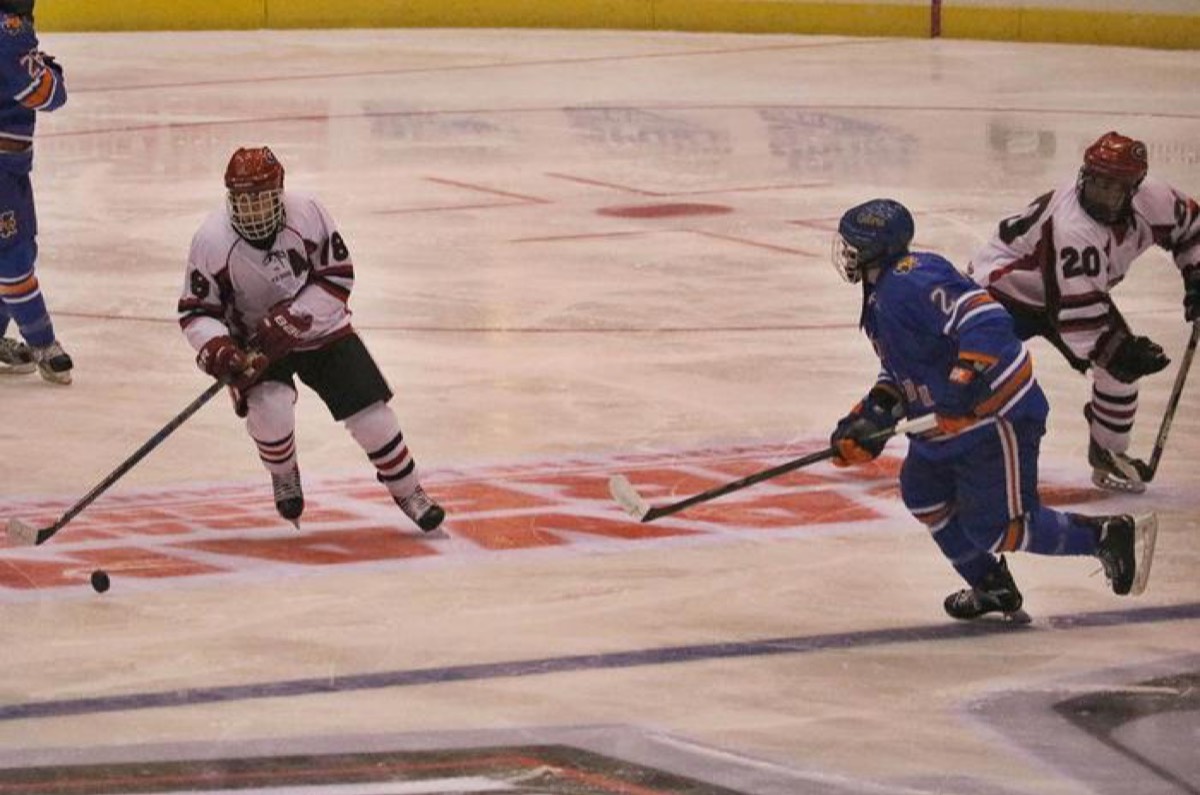University of Rochester linguist Andrew Bray started out studying the evolution of the trademark sports jargon used in hockey for his master's thesis. For instance, a hockey arena is a "barn," while the puck is a "biscuit." When he would tell people about the project, however, they kept asking if he was trying to determine why American hockey players sound like "fake Canadians." Intrigued, Bray decided to shift his research focus to find out if hockey players did indeed have distinctively Canadian speech patterns and, if so, why this might be the case.
He discovered that US hockey players borrow certain aspects of the Canadian English accent, particularly when it comes to hockey jargon. But they don't follow the typical rules of pronunciation. In short, "American hockey players are not trying to shift their speech to sound more Canadian," Bray said during a press briefing. "They're trying to sound more like a hockey player. That's why it's most evident in hockey-specific terms."
It's a concept known as a "linguistic persona," a means of communicating how one identifies—in this case, as a hockey player— through speech. Bray gave a talk about his research today at a meeting of the Acoustical Society of America in Ottawa, Canada, held in conjunction with the Canadian Acoustical Association.
Bray first had to figure out how to design a study to examine this question. "What does it even mean to sound like a 'fake' Canadian?" he said. The stereotypical Canadian speech patterns are well-known: pronouncing "out" as "oot," for example, or "about" as "aboot," not to mention adding a questioning "eh?" at the end of sentences. According to Bray, there are three common linguistic variables typical of Canadian English.
One is called the lower back merger shift, which involves lowering the tongue to pronounce the vowels in words like "bit" (ih), "bet" (eh), and "bat" (ah). The second is called Canadian raising, in which the body of the tongue is raised to pronounce the vowels in words like "tight" and "doubt." Finally, there are the vowels in words like "bait" and "boat." Canadians pronounce these vowels with only one configuration of the tongue, known as a monophthongal pronunciation. (If the tongue moves to a secondary configuration, that would be a diphthongal pronunciation.)
Bray thought the American players might be exhibiting some Canadian English variables in their speech but to different degrees, such that their pronunciations sounded just a wee bit off—i.e., "fake." He opted to focus on the monophthongal component since he thought those pronunciations were likely to be the most prevalent in "fake Canadian" speech among US hockey players.

Next, Bray had to build his own "corpus of hockey player speech" focused on American-born hockey players. That required extensive interviews with players. Professional National League Hockey (NHL) players might not have the time to participate, so he focused on the American Hockey League (AHL) and East Coast Hockey League (ECHL), narrowing his pool to four teams: the Charlotte Checkers, the Greenville Swamp Rabbits, the Rochester Americans, and the South Carolina Stingrays.
Bray played hockey for the University of Georgia Ice Dawgs, which helped him quickly establish a rapport with his subjects over their shared interest and get them talking at length about their hockey career trajectories. Among other benefits, it helped him avoid the dreaded "observer's paradox," in which asking someone to talk about their speech makes them self-conscious and subtly changes how they would normally talk. He collected data from 20 such interviews, conducted between 2017 and 2019, each lasting about 30 minutes.
He then turned those interviews into a database of "formants"—resonant frequencies that amplify some groups of harmonics above others in speech. Bray's ASA presentation focused on two common vowel formants. The first formant (F1) roughly corresponds to tongue height, while the second (F2) corresponds to how far forward or retracted the tongue is during pronunciation.
In the case of "bait"-like vowel sounds, Bray found some evidence among his US hockey players of a monophthongal pronunciation (minimal tongue movement), as one would expect in Canadian English and perhaps parts of the upper Midwest, but which would not otherwise be present in American English dialects. "Boat"-like vowel sounds seemed more "pseudo-monophthongal" in nature. But when these were compared with benchmark expectations for Canadian English F1 and F2 formants, US hockey players came close but fell just a bit short of the mark. Nor are their pronunciations in line with standard American English dialects.
"This might be why they sound 'fake,'" said Bray. "I'm arguing that this is the construction of a linguistic variant uniquely linked to hockey. It's influenced by Canadian English, but it's not entirely Canadian." And the way the US players in his dataset pronounced "hockey" seems to be "an entirely novel pronunciation of a word linked to this community." Bray suspects this influence will be relevant to his initial research on hockey slang, expecting to find that "hockey slang terms are pronounced differently than you'd expect for the other non-hockey related terms."
Bray suspects this happens via some sort of "lexical diffusion." At the junior league level (around 14 to 20 years of age), US players might not have these distinctive speech patterns, but their pronunciations may gradually shift over time the longer they play and pick up hockey slang terms. The more strongly they self-identify as hockey players, the more they will sound like "fake Canadians."
reader comments
212